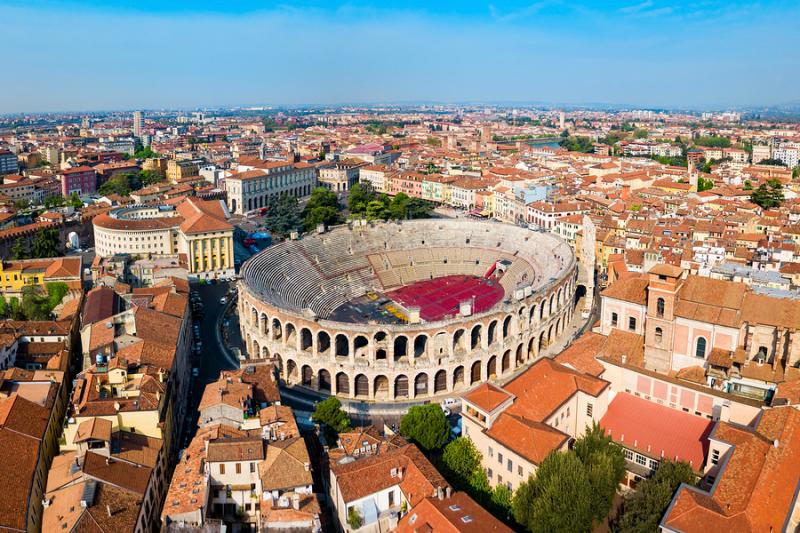Unesco Sites of Italy: Verona
ITA:

Use player to listen to Italian version
Built along the banks of the Adige river, the city of Verona has been a Unesco World Heritage site since 2000.
Founded in the 1st century B.C. by the Romans, it was later conquered by different Barbarian tribes, until it became an independent municipality in the 12th century, when it prospered under the rule of the Scaligeri family. This wealthy and powerful dynasty built the urban layout of the city, placing Piazza delle Erbe, the ancient Roman forum, in the center; the square became the seat of political and administrative power and today it still contains elements from different historical periods.
The Roman remains are among the most important in Northern Italy; these include the city gate, Porta Borsari, the remains of Porta Leoni, the Arco dei Gavi, the Ponte Pietra, the Roman theater, and the Arena. Among them, the Arena still features prominently on the city’s cultural scene, with its vast program of international theatrical and musical performances.
The monumental gates and fortifications testify to the strategic importance of the city, which until the 20th century remained within the walls rebuilt by the Scaligeri in the Middle Ages; they are considered a great example of a military stronghold, as well as an excellent representation of a fortified city that has developed progressively over the course of 2,000 years incorporating the artistic elements of each era.
According to Unesco, “the authenticity of the City of Verona is high. Verona’s surviving architecture and urban structure reflects the evolution of this fortified town over its 2,000 year history.”
Today, Verona is known mostly as the ‘city of love,’ because it is the setting of Shakespeare’s famous play “Romeo and Juliet.”
Costruita sulle rive del fiume Adige, la città di Verona è stata dichiarata Patrimonio dell'Umanità dall'Unesco nel 2000.
Fondata nel I secolo a.C. dai Romani, fu successivamente conquistata da diverse tribù barbariche, fino a quando divenne un Comune indipendente nel XII° secolo, prosperando sotto il dominio degli Scaligeri. Questa ricca e potente dinastia realizzò l’assetto urbano della città, ponendo Piazza delle Erbe, l’antico foro romano, al centro; la piazza divenne sede del potere politico e amministrativo e ancora oggi contiene elementi dei diversi periodi storici.
I resti romani sono tra i più importanti del Nord Italia; questi includono la porta della città, Porta Borsari, i resti di Porta Leoni, l'Arco dei Gavi, il Ponte Pietra, il teatro romano e l'Arena. L'Arena è al centro della vita culturale della città, con il suo vasto programma internazionale di spettacoli teatrali e musicali.
Le porte e le fortificazioni monumentali testimoniano l'importanza strategica della città, che fino al XX° secolo era contenuta all'interno delle mura ricostruite dagli Scaligeri nel Medioevo; questi elementi sono considerati un ottimo esempio di roccaforte militare, nonché un'eccellente rappresentazione di città fortificata che si è sviluppata progressivamente nel corso di 2000 anni incorporando gli elementi artistici di ogni epoca.
Secondo l'Unesco, “l'autenticità della città di Verona è alta. L'architettura e la struttura urbana di Verona riflettono l'evoluzione di questa città fortificata nel corso dei suoi 2000 anni di storia”.
Oggi Verona è conosciuta soprattutto come la “città dell'amore”, poiché è l'ambientazione della famosa tragedia di Shakespeare “Romeo e Giulietta”.











